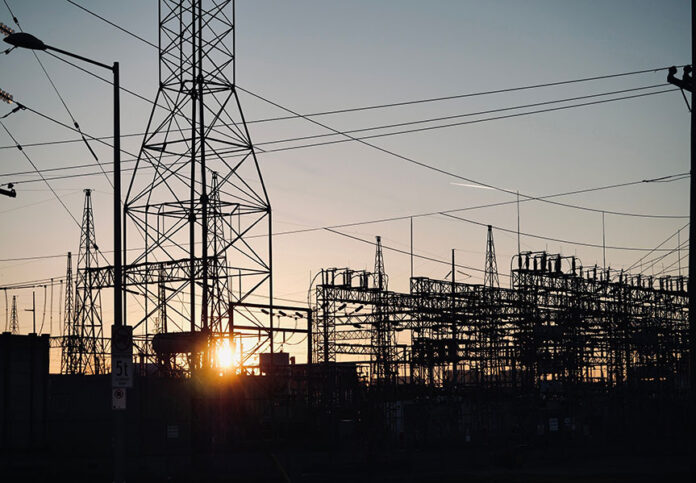ISLAMABAD: In flood-ravaged districts across Pakistan, thousands of families are spending their days and nights without electricity, as damage to more than 350 feeders and dozens of grid stations has left vast swathes of the country in darkness.
The Ministry of Energy’s Power Division reported on Saturday that while 152 feeders had been fully restored and another 202 partially revived by August 30, complete recovery is not expected until early September.
The outages have left homes, hospitals, water supply schemes and markets struggling to function. In areas like Swat and Buner, families said they were forced to rely on small diesel generators for light and water pumping, but fuel shortages and soaring costs mean most households remain powerless after sunset. Shops storing perishable goods, including dairy and meat, were incurring losses as cold storage facilities stand idle, while students preparing for exams describe nights spent in darkness with no way to study.
The Power Division’s report has painted a picture of widespread damage across multiple provinces under the state-run distribution companies. The worst affected has been the Peshawar Electric Supply Company’s network, where twelve grid stations and ninety-one feeders went down in Swat, Buner, Shangla, Swabi and Dera Ismail Khan. Although power has since returned to most of Swabi and Dera Ismail Khan, dozens of rural households in the hilly districts of Swat and Shangla remain cut off.
In Punjab, outages have hit large industrial and agricultural hubs. Gujranwala Electric Power Company reported that ten grid stations and eighty-seven feeders were knocked out across Sialkot, Narowal, Wazirabad and Hafizabad. While sixty-eight feeders were fully restored by the end of August, families in low-lying neighborhoods of Sialkot said intermittent supply has been forcing them to fetch drinking water from hand pumps.
Lahore and its surrounding districts of Okara, Sheikhupura, Kasur and Nankana have also suffered with fifty-six feeders going out of service.
Sources in power division said that restoration in these areas has depended on how quickly floodwaters recede, with estimates ranging between August 31 and September 5. For residents of rural Kasur and Nankana, where wells and tube-wells rely on electric motors, the wait has left entire villages depending on trucked water.
Faisalabad, Chiniot, Jhang, Sargodha, Mianwali and parts of Dera Ismail Khan saw disruptions on fifty-three feeders under the Faisalabad Electric Supply Company’s network. Temporary supply has been reconnected in most areas, but shopkeepers in Jhang say their businesses are suffering as fans and lights still fail without warning, deterring customers from staying in their stores.
In South Punjab, the Multan Electric Power Company reported sixty-seven feeders hit by floods. Restoration has not begun in some localities where waterlogging remains severe, as officials warned of electrocution risks if power is switched on prematurely. Families in Muzaffargarh and Layyah say they are cooking on wood stoves again, while schools that reopened after the floodwaters receded are struggling to operate without fans and lighting in the lingering humidity.
In North Waziristan, the Tribal Electric Supply Company has managed to revive two feeders temporarily, but residents say voltage fluctuations make it impossible to run even basic appliances. Authorities expect full recovery there by September 5.
The Power Division emphasized that while progress has been faster than earlier in the week, safety protocols are being strictly observed. Sources also said that previous disasters have shown that hasty reconnections in inundated areas often result in fatal accidents, and therefore power will only be restored once standing water has drained completely.
According to industry sources, the recurring disruption has underlined the need for stronger climate resilience in Pakistan’s power sector. Each year, the monsoon season damages substations, feeders and transformers, leaving communities in the dark for weeks. The catastrophic floods of 2022 crippled nearly one-third of the distribution system, with some districts waiting months for permanent recovery. Proposals to elevate grid stations, waterproof transformers and develop alternative supply routes have been put forward, but progress has stalled amid financial and governance constraints.
Power Division has promised daily progress updates and pledged that “safe and speedy restoration in all affected districts” remained their top priority. Yet as of August 30, with more than two hundred feeders still only partially energized, the ordeal for flood-hit families continues. And while the Power Division projects cautious optimism that much of the network will be restored by early September, residents in submerged towns know that full relief may take much longer.
Flood-hit areas remain without power as hundreds of feeders await full restoration
Thousands of households remain in darkness as flood damage cripples power supply




